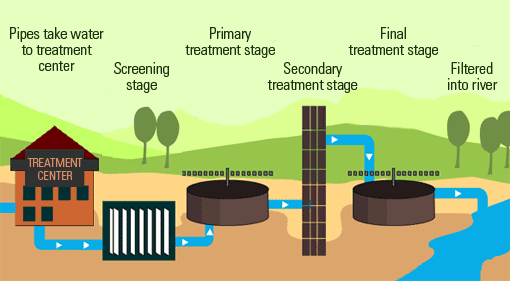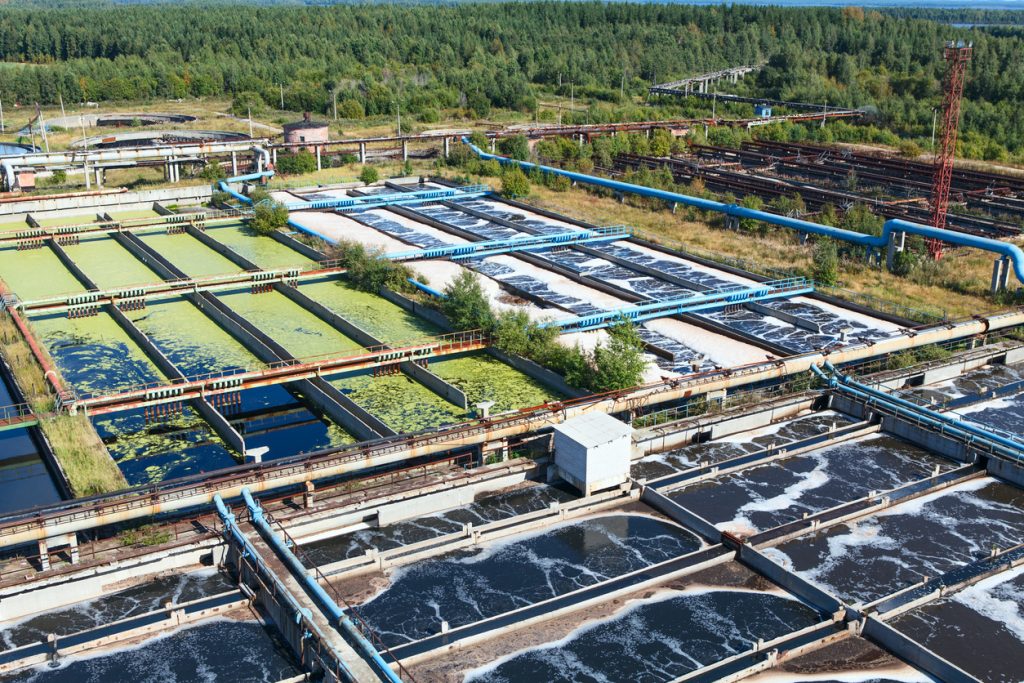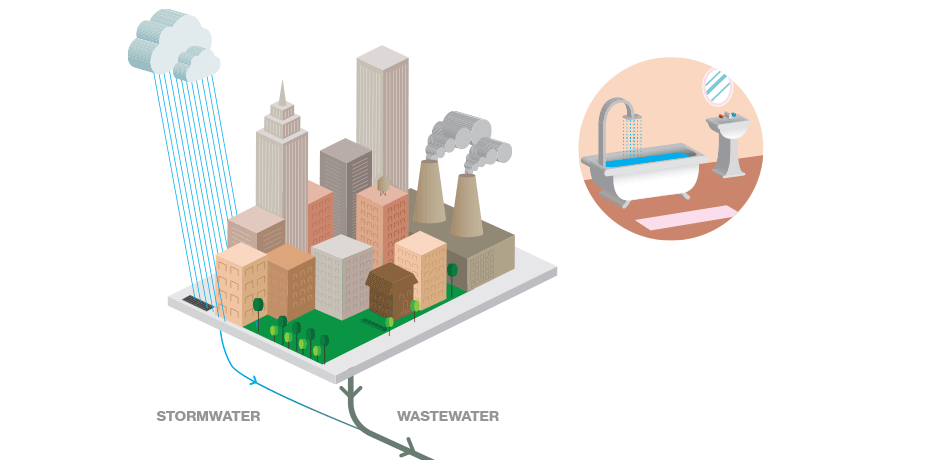The Value of Chemical Processes in Waste Water Treatment
The Value of Chemical Processes in Waste Water Treatment
Blog Article
Strategic Approaches to Improve Waste Water Therapy Performance and Reduce Ecological Influence
In the world of drainage treatment, the pursuit for enhanced performance and reduced environmental influence is a continuous challenge that demands calculated options. As society faces the critical to manage water sources sustainably, a nuanced technique becomes crucial. The assimilation of sophisticated therapy innovations, energy-efficient processes, resource recovery strategies, improved nutrient removal methods, and clever surveillance and control systems stands for a complex framework for addressing these pushing worries. What exists at the core of this complicated internet of approaches is the prospective to revolutionize the method we approach waste water treatment, not just as a procedure of disposal, yet as a useful opportunity for advancement and ecological stewardship.
Advanced Treatment Technologies
Cutting-edge membrane layer filtration systems have actually transformed advanced wastewater treatment procedures, substantially enhancing the elimination of pollutants. These cutting-edge systems work by compeling water through a semi-permeable membrane, efficiently separating impurities from the water stream. The membrane layer's tiny pores trap pollutants such as microorganisms, viruses, and put on hold solids, enabling just cleansed water to travel through. This technology has actually proven to be highly efficient in getting rid of a large range of impurities, including pharmaceuticals, heavy metals, and organic compounds, which are typically testing to eliminate via traditional therapy approaches.
Additionally, membrane layer filtration systems supply countless advantages over traditional therapy methods. They call for less room, produce higher-quality effluent, and are more resistant to variations in influent water high quality. Furthermore, these systems are very flexible and can be conveniently incorporated into existing treatment plants or utilized as standalone devices for decentralized applications. As the demand for tidy water continues to increase, the adoption of sophisticated membrane purification technologies is important to ensure sustainable and efficient wastewater treatment practices.
Energy-Efficient Procedures
The integration of energy-efficient procedures in wastewater treatment systems is important for optimizing resource usage and minimizing operational prices. By carrying out energy-efficient modern technologies, therapy plants can dramatically reduce their carbon footprint and general ecological impact. One key strategy to improving power performance in wastewater treatment is the utilization of innovative aeration systems, such as fine bubble diffusers or surface aerators, which can enhance oxygen transfer efficiency and minimize energy consumption. Furthermore, integrating power recuperation systems, like anaerobic digestion for biogas manufacturing or utilizing excess warm for thermal procedures, can aid counter energy demands and advertise sustainability.
Moreover, optimizing process control and automation with making use of innovative sensors and checking systems can enhance general power efficiency by readjusting operations in real-time based on real need and problems. Carrying out energy audits and regularly keeping track of energy performance indications are essential techniques to recognize locations for renovation and track energy-saving campaigns successfully. Generally, the fostering of energy-efficient processes in wastewater treatment not only profits the setting however likewise adds to lasting price savings and operational sustainability.
Source Healing Methods
With a concentrate on optimizing resource usage and sustainability in wastewater treatment systems, the execution of source recovery techniques emerges as an essential element in boosting functional effectiveness. Resource healing techniques in wastewater More Info treatment entail the identification and removal of useful resources from the waste stream, therefore turning what was when thought about waste into a beneficial property. By carrying out resource recuperation techniques such as nutrient removal and recovery, energy generation from organic matter, and the manufacturing of recyclable water, wastewater therapy plants can decrease ecological influence while making best use of effectiveness.

Boosted Nutrient Removal Techniques
Executing advanced nutrient removal strategies is necessary for enhancing the effectiveness of wastewater treatment systems. Boosted nutrient removal plays an essential role in minimizing the ecological effect of treated effluent released into water bodies. Among the crucial methods used for boosted nutrient removal is the process of organic nutrient removal (BNR), which involves the elimination of nitrogen and phosphorus with biological procedures. This can be accomplished via the usage of specialized bacteria that can transform nitrogen compounds into inert nitrogen gas via denitrification, and build up phosphorus within their cells via a process called boosted organic phosphorus removal (EBPR)

In addition to BNR, progressed treatment techniques such as membrane layer bioreactors (MBRs) and built wetlands can also be utilized to enhance nutrient elimination effectiveness. MBRs utilize membrane layers to accomplish top notch effluent requirements by effectively getting rid of nutrients and put on hold solids. Created marshes mimic natural wetland processes to remove nutrients via plant uptake, microbial task, and sedimentation. By integrating these advanced nutrient elimination methods right into wastewater treatment sectors, systems and districts can successfully minimize nutrient air pollution and shield the setting.
Smart Tracking and Control Equipment
Using innovative Look At This innovation, the integration of smart surveillance and control systems reinvents the operational performance of wastewater therapy facilities. These systems include sophisticated sensors and information useful site analytics to constantly keep track of vital specifications such as pH levels, turbidity, liquified oxygen, and flow prices in real-time. By gathering and analyzing this information, operators can obtain useful insights right into the performance of the therapy processes, enabling aggressive modifications to maximize treatment efficiency.
Smart surveillance and control systems likewise sustain remote surveillance capabilities, permitting drivers to accessibility real-time information and control functions from off-site places. This remote availability improves operational adaptability and responsiveness, allowing speedy interventions in situation of system malfunctions or changes in influent quality. Moreover, the predictive upkeep abilities of these systems aid stop equipment failures and minimize downtime, inevitably boosting the total integrity of wastewater treatment operations (Waste Water Treatment).
Final Thought
In final thought, tactical techniques such as sophisticated therapy innovations, energy-efficient processes, resource recovery techniques, boosted nutrient removal strategies, and clever surveillance and control systems play an important role in boosting wastewater therapy performance and lessening environmental effect. By carrying out these techniques, wastewater therapy plants can improve their overall efficiency, reduce energy consumption, recover important resources, and ensure conformity with ecological guidelines. These approaches are essential for lasting and efficient wastewater management methods.

In conclusion, critical methods such as innovative treatment modern technologies, energy-efficient processes, source healing approaches, improved nutrient elimination methods, and clever tracking and control systems play an important duty in improving wastewater treatment effectiveness and minimizing ecological impact.
Report this page